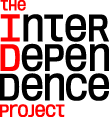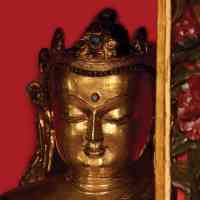
About the Meditation
Meditation session led by Tracy Cochran.
The guided meditation begins at 12:17.
For centuries Himalayan practitioners have used meditation to quiet the mind, open the heart, calm the nervous system, and increase focus. Now Western scientists, business leaders, and the secular world have embraced meditation as a vital tool for brain health.
Whether you’re a beginner, a dabbler, or a skilled meditator seeking the company of others, join expert teachers in a forty-five-minute weekly program designed to fit into your lunch break. Each session will be inspired by a different work of art from the Rubin Museum’s collection and will include an opening talk, a twenty-minute meditation session, and a closing discussion.
This program is supported in part by the Hemera Foundation with thanks to our presenting partners Sharon Salzberg, the Interdependence Project, and Parabola Magazine.

Related Artwork

Theme: Acceptance
In Tibetan Buddhist cultures, those who are unable to read are instructed to spin a “wheel” filled with thousands of inscribed mantras, or mani, written on paper tightly wrapped around a central pole inside a cylinder that encases them. It is believed that turning the wheel is the same as reciting the prayers and mantras, leading to the accumulation of merit and wisdom while purifying negative karma for a practitioner. It also releases these mantras into the world, benefitting countless beings.
Believed to go back to the famous Indian master Nagarjuna, this common practice is usually accompanied by vocal recitations of mantras and often combined with circumambulation around a sacred site or temple. The wheels are spun clockwise so the mantras inside can be read correctly, from left to right.
This stationery prayer wheel would have been placed outside of a temple or shrine so visitors could turn the wheel on their way in and out of the temple and while circumambulating it. The rectangular panels that house the wheel are painted in the traditional Central Tibetan style and display teachers and deities of the Sakya Tibetan Buddhist tradition. The lotus petal cutouts on each panel serve as windows into the large decorated wooden cylinder of the prayer wheel inside. A smaller prayer wheel, capped by a bronze finial and threaded onto a long metal spindle on top, was probably a later addition. The mantra of the deity of compassion Avalokiteshvara, om mani padme hum, decorates the posts of the structure in ornamental Lantsa script.
About the Speaker

Tracy Cochran has been a student and teacher of meditation and spiritual practice for decades. She is the founder of the Hudson River Sangha, which is now virtual and is open to all. The link for her weekly meditations can be found on her website: tracycochran.org.
In addition to the Rubin Museum of Art, Tracy Cochran has taught mindfulness meditation and mindful writing at the New York Insight Meditation Center, as well as in schools, corporations, and other venues nationally and internationally. She is also a writer and the editorial director of Parabola, an acclaimed quarterly magazine that seeks to bring timeless spiritual wisdom to the burning questions of the day. Her writings, podcasts, and other details can be found on her website and on parabola.org.

